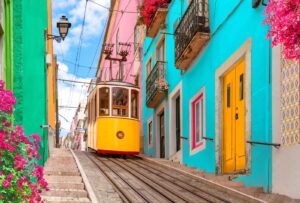12 cities around the world where you can live cheaply, from $300-a-month rents to $1 cappuccinos
15 min read12 cities around the world where you can live cheaply, from $300-a-month rents to $1 cappuccinos
The letter F.
Facebook
An envelope. It indicates the ability to send an email.
A stylized bird with an open mouth, tweeting.
Twitter
The word “in”.
LinkedIn
An image of a chain link. It symobilizes a website link url.
Copy Link
Save
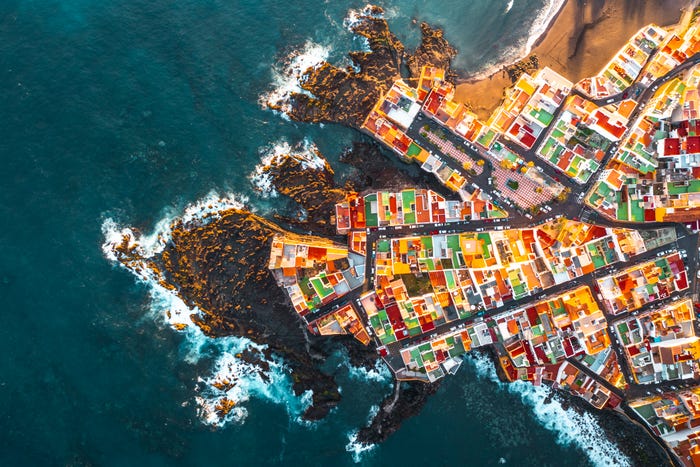
An icon in the shape of an angle pointing down.
Getty Images / Marco Bottigelli
- Many Americans are moving abroad in search of cheaper housing, food, and a more laid-back lifestyle.
- Insider compiled a list of 12 cities around the world where the cost of living is relatively low.
- It includes a tropical island off the coast of Morocco and a Thai paradise with ancient temples.
More and more Americans are looking overseas, hoping to take advantage of a strong dollar and cheaper homes. Remote workers, too, are taking flight, becoming “digital nomads” while living in idyllic spots such as Spain and Colombia.
Insider has compiled a list of 12 cities where you can live relatively cheaply, using data from Numbeo, a comparison website that provides crowdsourced summaries of the cost of living in major cities across the world.
Numbeo averages user-submitted expenses, including estimated monthly costs for a single person or a family of four, as well as monthly rent and the price to buy a home in the city center. It also determines the typical prices for a coffee, a meal for two, and a gym membership. While Numbeo’s methodology relies on users around the world entering their costs accurately, it is a useful tool for cross-city comparison.
Insider identified some of the most affordable cities across the world, compared to the US. All prices have been converted to US dollars, and the cities’ populations are sourced from United Nations data unless otherwise noted.
Many of these spots also rank highly on quality of life measures — but it’s important to note that lower living costs sometimes come at the expense of other city features like safety, healthcare, and pollution.
Read on to learn more about these affordable places, including India’s pink city and a Bolivian hub with colonial and modern architecture.
Have you found an affordable paradise in another part of the world? Tell us! Email reporter Alcynna Lloyd at allloyd@insider.com.
Bucharest, Romania
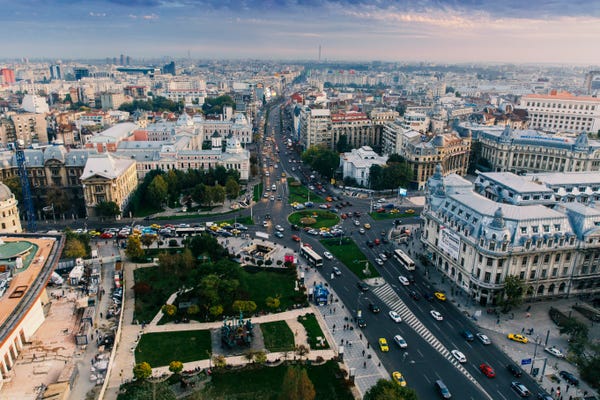
danieldiaconu/Getty Images
Population: 1.82 million (2021)
Known for: The capital and largest city in Romania, Bucharest is recognized as the cultural and financial center of the country. Often referred to as “Little Paris,” the city has heavy French influence in its architecture. In recent years, it has also earned a reputation as a top nightlife destination.
Average monthly rent for a one-bedroom home in the city center: $468.25
Average cost to buy a 1,000-square-foot home in the city center: $239,990
Monthly costs for a single person (excluding housing): $638.80
Monthly costs for a family of four (excluding housing): $2,237.40
Cost of a cappuccino: $2.83
Cost of a three-course meal for two: $47.92
Monthly cost of a gym membership: $45.65
Most common jobs: Agriculture, transportation, engineering, and hospitality.
Someone who lives there said: “To make local friends, I’ve found success by talking to fellow dog owners at the parks, and taking fitness classes at gyms,” Jennifer, an American teacher living in Bucharest, said in the travel and lifestyle blog, Ashley Abroad.
It might be hard to move there because: Heavy traffic, poor air quality, and dirty sidewalks are a few downsides to life in Bucharest, according to the Romania Experience website. In addition, the war in Ukraine has resulted in a surge in refugee migration to Romania, which may strain its resources.
Cape Town, South Africa
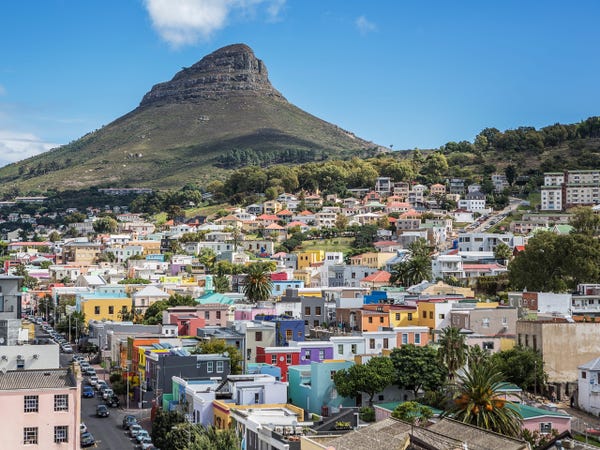
Johannes Mann / Getty Images
Population: 4.76 million as of 2021, according to an estimate by the Western Cape Government
Known for: Renowned for its beauty and biodiversity, Cape Town’s natural features include the iconic Table Mountain, numerous world-class beaches, and prime spots for whale-watching and penguin-spotting.
Average monthly rent for a one-bedroom home in the city center: $642
Average cost to buy a 1,000-square-foot home in the city center: $182,980
Monthly costs for a single person (excluding housing): $512.6
Monthly costs for a family of four (excluding housing): $1,782.40
Cost of a cappuccino: $1.74
Cost of a three-course meal for two: $32.42
Monthly cost of a gym membership: $36.19
Most common jobs: Hospitality, tourism, mining and mineral processing, and sales.
Someone who lives there said: “Things that would be extravagant in the US are affordable to us here,” Zan Zurawski, a US expat who lives in a two-bedroom cottage near Cape Town, told Insider in 2022. “Wine tasting at a local vineyard, for example, costs about 120 rands for five wines from the heart of South Africa’s famed wine lands. A 12-course dinner at La Colombe — which has often been featured on “world’s best” lists — costs 1,695 rands a person.” As of March 23, 2023, 120 rands is about $6.63, while 1,695 is about $93.62.
It might be hard to move there because: Though it can be considered relatively cheap by US and northern European standards, Cape Town is pricey compared to other parts of South Africa. Some people have to decamp to further-out suburbs to get a house they can afford with a backyard. Also, South Africa experiences frequent power cuts and outages, which Reuters reported have plagued Captonians and others since December. Outages can last up to 10 hours.
Cartagena, Colombia
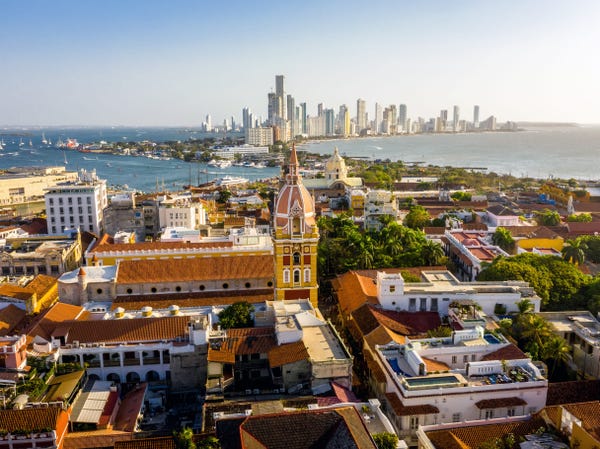
RoNeDya/Getty Images
Population: 887,946 (2020)
Known for: Spain established Cartagena as the first established colony in the Americas, building a charming old city with jewel-toned facades, and domed and steepled buildings that is now recognized as a UNESCO World Heritage Site. The city sits on the shores of the Caribbean Sea, with beautiful beaches close by.
Average monthly rent for a one-bedroom home in the city center: $473.66
Average cost to buy a 1,000-square-foot home in the city center: $193,950
Monthly costs for a single person (excluding housing): $407
Monthly costs for a family of four (excluding housing): 1,350.10
Cost of a cappuccino: $1.42
Cost of a three-course meal for two: $19.27
Monthly cost of a gym membership: $20.10
Most common jobs: Teaching, hospitality, sales, and agriculture.
Someone who lives there said: “Cartagena is the pride of the Caribbean, and the beach weather all year round contributes to a better quality of life,” wrote Adam McConnaughhay, a teacher from South Carolina who moved to Cartagena for a yearlong program in 2011 and decided to stay. “The cost of living is affordable, people are great, the city is lively — it’s a great option for expats looking to move to Colombia.”
It might be hard to move there because: McConnaughhay told a travel blog that “the street and beach vendors can be a bit pushy” and that “it can be frustrating to be hounded while walking to the supermarket.” He also alluded to some rougher parts of the city, but said that people with street smarts will be able to easily navigate them. Also of note: You cannot work in Colombia on a tourist visa. Expats must obtain a license or work visa for their respective profession.
Chiang Mai, Thailand

tawatchaiprakobkit/Getty Images
Population: 1.21 million in 2023, according to the CIA World Factbook
Known for: With temperatures between 59° and 97° Fahrenheit year-round, the largest city in northern Thailand is a tropical paradise. The city is renowned for its ornately decorated ancient temples and its sprawling night market, which features local crafts, street food, and other knick-knacks.
Average monthly rent for a one-bedroom home in the city center: $351.82
Average cost to buy a 1,000-square-foot home in the city center: $155,260
Monthly costs for a single person (excluding housing): $509.80
Monthly costs for a family of four (excluding housing): $1,808.50
Cost of a cappuccino: $1.59
Cost of a three-course meal for two: $15.37
Monthly cost of a gym membership: $37.72
Most common jobs: Tourism, farming, and food.
Someone who lives there said: “One of the draws of Chiang Mai was the slightly more raw and rough feeling of the town,” Skye Class, a travel blogger, said in a post. “It’s nice to see a lot of development in the city, yet part of the charm of Chiang Mai is the crude underdevelopment.”
It might be hard to move there because: Some expats say that it’s too hot and humid or that the language barrier makes it hard to connect with locals. The air quality is also poor, especially between December and April when farmers set their fields on fire to prepare to plant crops. To gain citizenship, an expat must live in the country as a permanent resident for at least 5 years.
George Town, Malaysia

Inti St Clair/Getty Images
Population: 228,250 (2021)
Known for: George Town is the capital of Penang and sits off the northwest coast of Malaysia. The small, tropical island is a foodie’s paradise, especially for street-cart eats and hawker fare. Other popular sights include beaches, mountains, temples, colonial villages, rickshaws, and more.
Average monthly rent for a one-bedroom home in the city center: $327.46
Average cost to buy a 1,000-square-foot home in the city center: $135,120
Monthly costs for a single person (excluding housing): $485.10
Monthly costs for a family of four (excluding housing): $1,701.70
Cost of a cappuccino: $2.29
Cost of a three-course meal for two: $10.16
Monthly cost of a gym membership: $26.54
Most common jobs: Service, sales, hospitality, and tourism.
Someone who lives there said: “It’s both historical and modern,” Kirsten Blumberg Raccuia, a self-proclaimed digital nomad wrote in a 2020 blog post for the travel and lifestyle website, Goats on the Road. “Living in Penang affords all the modern comforts needed for a home, but it’s still raw enough to keep it interesting.”
It might be hard to move there because: A woman who moved to Penang in 2013 recently summarized some downsides: There’s great street food but not a wide variety of restaurants and bars, the beaches are gorgeous but the water isn’t clear, and it can be hard to find groceries, furniture, and other imported items for reasonable prices. Also, while foreign nationals and their dependents can get a 10-year visa “if they make a fixed deposit in a Malaysian bank or invest in real estate,” expats must renounce their previous nationalities if they want to become citizens.
The monthly costs for a single person and a family of four are for the state of Penang, where George Town is the biggest city. Numbeo did not have sufficient data to determine those amounts for George Town alone.
Jaipur, India
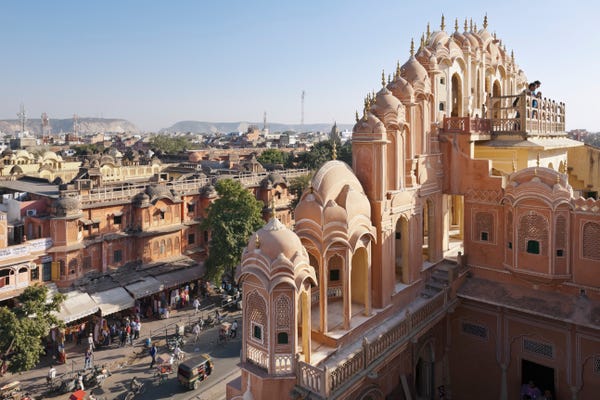
Paul Panayiotou/ Getty Images
Population: 3.05 million (2017)
Known for: Home to some of India’s most adorned royal palaces, forts, and temples, Jaipur has been dubbed the Pink City because a Maharaja from the 19th century painted buildings ahead of a visit from Queen Victoria. The capital and largest city of Rajasthan, a state located in northwestern India, Jaipur is also a destination for jewelry, fabric, antiques, and arts and crafts.
Average monthly rent for a one-bedroom home in the city center: $145.36
Average cost to buy a 1,000-square-foot home in the city center: $151,230
Monthly costs for a single person (excluding housing): $321.80
Monthly costs for a family of four (excluding housing): $1,076.50
Cost of a cappuccino: $1.51
Cost of a three-course meal for two: $12.11
Monthly cost of a gym membership: $18.74
Most common jobs: Tourism, gemstone cutting, manufacturing, and textiles.
Someone who lives there said: “People are constantly going out of their way to make sure my needs are met, whether it’s at a restaurant, mall, or visiting a hotel, the staff always make sure you are satisfied,” an American expat called Laura told Expat.com. “Friends and strangers alike are always offering to cook for you, or invite you to holiday celebrations in their home.”
It might be hard to move there because: Pollution, crime, poor accommodation for pedestrians, and public transit are among the challenges. Digital nomads can enter India on a tourist visa, but be mindful of the need to leave, reapply, and reenter before it expires. Citizenship by naturalization can be obtained in India, but it will take an expat no less than 12 years.
Lagos, Nigeria
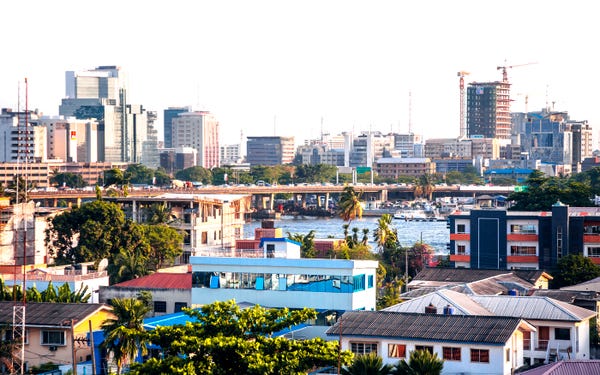
peeterv/Getty Images
Population: 15.95 million in 2023, according to the CIA World Factbook
Known for: Lagos has emerged as a major financial and cultural hub in one of the fastest-developing countries in Africa. Set on the Gulf of Guinea, Lagos has a booming movie-making industry called Nollywood and is also a haven for tech startups. It’s also home to some of the continent’s most-prestigious schools and universities.
Average monthly rent for a one-bedroom home in the city center: $1,550.80
Average cost to buy a 1,000-square-foot home in the city center: $83,240
Monthly costs for a single person (excluding housing): $602.20
Monthly costs for a family of four (excluding housing): $2,188.90
Cost of a cappuccino: $3.32
Cost of a three-course meal for two: $43.44
Monthly cost of a gym membership: $39.69
Most common jobs: Accountant, sales, marketing, business development.
Someone who lives there said: “If moving to a new city takes a village, moving to Lagos takes a whole continent. It is not for the faint of heart,” Alma Asinobi wrote in a blog post about her experience moving to Lagos to work at Cowrywise, a Nigerian financial-tech firm, in 2021. She described the apartment-hunting experience as expensive and stressful.
It might be hard to move there because: As recently as 2018, the Economist Intelligence Unit named Lagos one of the worst places in the world to live, citing a lack of stability, relatively high crime, poor education, and ineffective healthcare. Due to its large population, housing is scarce in the city. An expat moving to Lagos will need a lot of time and patience.
Larissa, Greece
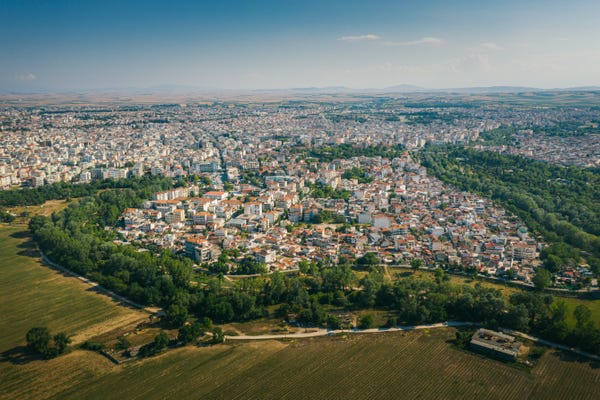
Alessio Barsotti/Getty Images
Population: 162,000 (2017), according to the UNESCO Institute
Known for: Larissa is the main town of the Thessaly region of Greece, which lies between Mount Oeta and Mount Olympus. Located on the Pineiós river, the city is surrounded by rich valleys and features a mountainous landscape. Larissa’s biggest attractions include its amphitheater, which dates back to Roman times, and the Diachronic Museum, which houses its ancient and medieval material history.
Average monthly rent for a one-bedroom home in the city center: $286.90
Average cost to buy a 1,000-square-foot home in the city center: $184,330
Monthly costs for a single person (excluding housing): $721.50
Monthly costs for a family of four (excluding housing): $2,420.70
Cost of a cappuccino: $3.16
Cost of a three-course meal for two:$34.86
Monthly cost of a gym membership: $45.58
Most common jobs: Manufacturing, agriculture, and tourism.
Someone who lives there said: “There are many places to visit,” Usuario Anónimo wrote in a blog post on the international-student platform, Erasmusu. “What I liked the most was an ancient theater, which was built outside and it reminds you of ancient Greece. This place is ideal for walks, while many choose to go ride their bikes there or go jogging.”
It might be hard to move there because: It’s about an hour from two different beach regions. While Greece’s digital-nomad visa is available to non-EU citizens, expats must meet specific requirements like having health insurance and an income of at least 3,500 euros, or $3,769, a month.
Puebla, Mexico
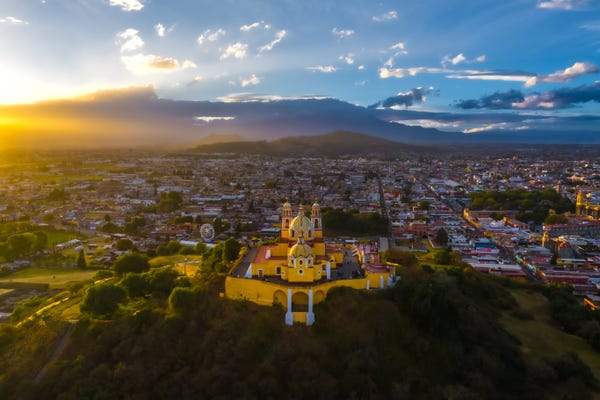
Carlos Silva/Getty Images
Population: 3.3 million (2022)
Known for: The fourth-largest Mexican city, located in the Valley of Cuetlaxcoapan, is surrounded by mountains, including the iconic volcano, Popocatépetl. Located just a two-hour drive from Mexico City, Puebla’s historic center was named a UNESCO World Heritage site because of its preservation of religious structures and monuments from the 16th and 17th centuries.
Average monthly rent for a one-bedroom home in the city center: $335.81
Average cost to buy a 1,000-square-foot home in the city center: $72,790
Monthly costs for a single person (excluding housing): $524.20
Monthly costs for a family of four (excluding housing): $1,851.20
Cost of a cappuccino: $2.60
Cost of a three-course meal for two: $26.58
Monthly cost of a gym membership: $28.35
Most common jobs: Retail trade, manufacturing, and hospitality.
Someone who lives there said: “Whether you’re Catholic or not, it’s hard not to fall in love with the raw beauty of the churches in Puebla,” a travel blogger called Greg wrote on his website, the Present Perspective. “There are 365 Catholic churches in the city of Puebla, and every single one is stunning.”
It might be hard to move there because: Puebla can get relatively cold, dropping into the 50-degree-Fahrenheit range during some seasons. There are American stores, including Walmart, IHOP, and Pizza Hut — which might be a pro or con, depending on how homesick you are. To work in Mexico as a digital nomad you could get a six-month tourist visa or a temporary residence visa, which allows stays for up to four years. Obtaining permanent residency in Mexico, however, is a lengthy and time-consuming process that requires proof of Spanish-speaking capabilities.
Rabat, Morocco
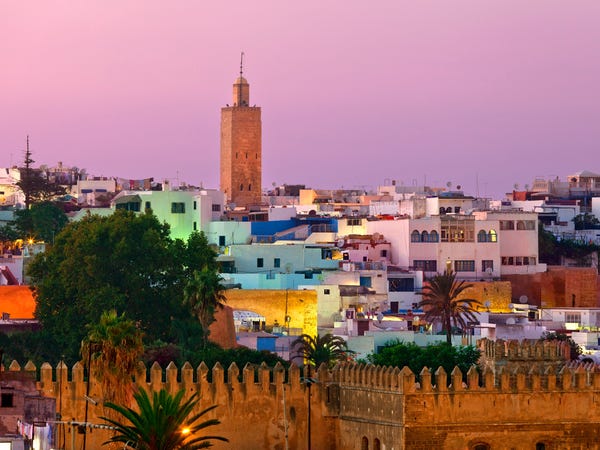
Sylvain Sonnet/Getty Images
Population: 1.95 million in 2023, according to the CIA World Factbook
Known for: Located on the Atlantic Ocean about 54 miles from Casablanca, the Moroccan capital is home to the Royal Palace, the official residence of the King of Morocco and the country’s most historically significant museum, replete with gardens. The city is widely considered the Washington DC of northern Africa because of its many government buildings, embassies, green spaces, and wide streets.
Average monthly rent for a one-bedroom home in the city center: $433.51
Average cost to buy a 1,000-square-foot home in the city center: $188,770
Monthly costs for a single person (excluding housing): $452.20
Monthly costs for a family of four (excluding housing): $1,589.20
Cost of a cappuccino: $1.80
Cost of a three-course meal for two: $26.09
Monthly cost of a gym membership: $23.14
Most common jobs: Tourism, agriculture, textiles, construction, and mining.
Someone who lives there said: “Even if you live in a quiet neighborhood in Rabat, you can always find areas with restaurants and cafes to go out and have fun,” Elizabeth Gribbs, an English teacher from the United States, told the Arab Weekly in a story about Rabat becoming “Morocco’s expat hot spot.”
It might be hard to move there because: Kate, an American writer who moved to Morocco in 2021, and her partner Anas, a teacher and Moroccan native, wrote that the downsides of the country include corruption, bureaucracy, and “terrible” healthcare.
Santa Cruz, Bolivia
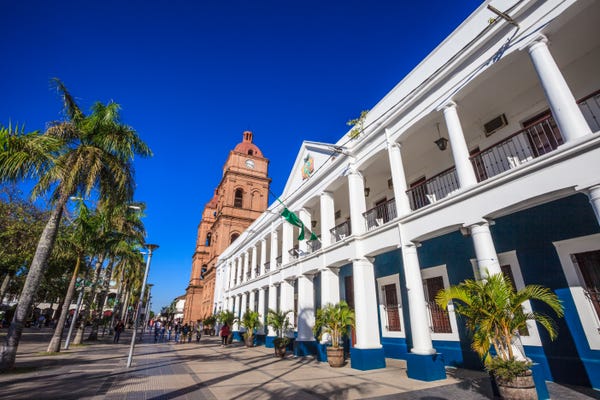
Kelly Cheng/Getty Images
Population: 1.82 million in 2022, according to the CIA World Factbook
Known for: Santa Cruz is the commercial center of the country, rich with culture and fast developing into a modern metropolis. Located in the “tropical lowlands” of Bolivia, it sits along the Piraí River. The ruins of an ancient village called El Fuerte are a UNESCO World Heritage Site and one of the city’s most significant landmarks.
Average monthly rent for a one-bedroom home in the city center: $401.60
Average cost to buy a 1,000-square-foot home in the city center: $106,250
Monthly costs for a single person (excluding housing): $486.90
Monthly costs for a family of four (excluding housing): $1,721.70
Cost of a cappuccino: $2.26
Cost of a three-course meal for two: $28.99
Monthly cost of a gym membership: $40.76
Most common jobs: Agriculture, mining, and natural gas.
Someone who lives there said: “It was incredible living in a ‘big-ish’ city with all the modern amenities one would want — while still being able to go on hikes or hit the sand dunes in a quick day trip,” Jake Nomada, a blogger, wrote in a post on the travel website, Nomadic Hustle.
It might be hard to move there because: Santa Cruz has limited job prospects for foreign-born residents, who might have to resort to working remotely. A high crime rate and a lack of infrastructure are two other challenges.
Santa Cruz de Tenerife, Spain
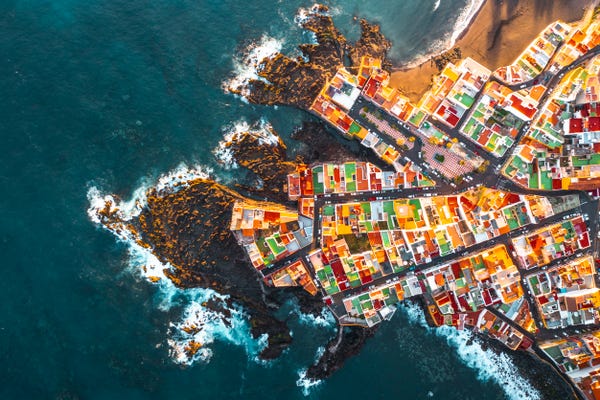
Getty Images / Marco Bottigelli
Population: 208,878 (2020)
Known for: With temperatures in the 60s and 70s all year round, the volcanic island of Tenerife, part of the Canary Islands about 600 miles west of Morocco in the Atlantic Ocean, is a popular vacation and retirement spot for many British and German citizens. They especially enjoy its beaches, cobblestoned villages, and nightclubs. Santa Cruz is its capital, a port city with a charming historic downtown.
Average monthly rent for a one-bedroom home in the city center: $709.68
Average cost to buy a 1,000-square-foot home in the city center: $207,080
Monthly costs for a single person (excluding housing): $617.90
Monthly costs for a family of four (excluding housing): $2,217.90
Cost of a cappuccino: $1.81
Cost of a three-course meal for two:$42.87
Monthly cost of a gym membership:$41.79
Most common jobs: Tourism, public relations, marketing, agriculture, and manufacturing.
Someone who lives there said: “My expenses in Tenerife were similar to those in Portugal, with my biggest expenses being rent, which was $700 for a bedroom in a shared modern apartment, five minutes from the beach,” Lora Pope, a self-described digital nomad who lived in seven different countries over 18 months, wrote for Insider. “Renting a car makes life in Tenerife considerably more expensive, so I saved money by biking or taking public transit instead, and opted to cook most meals at home.”
It might be hard to move there because: “Golden visas,” or pathways to citizenship through real-estate investment, to Spain can be pricey and require an investment of about $537,000. A woman who lived in Lisbon and London before moving to Tenerife said that she’s “happier in Tenerife” but nonetheless highlighted some downsides to living there on her blog, including traffic, poor public transit (and expensive taxis), and uneven quality of healthcare.



